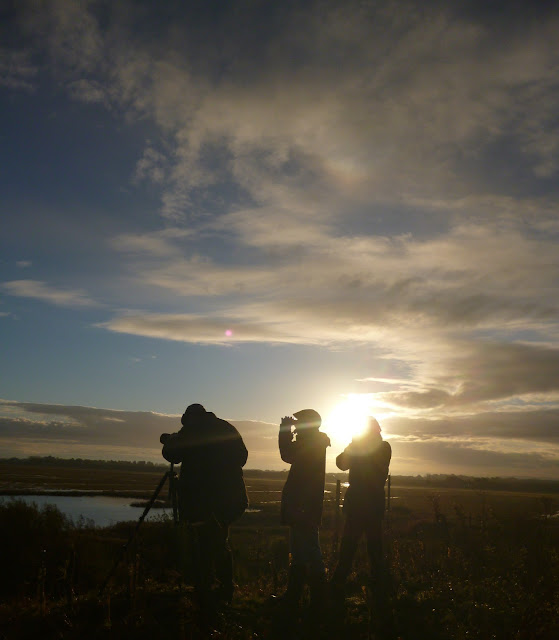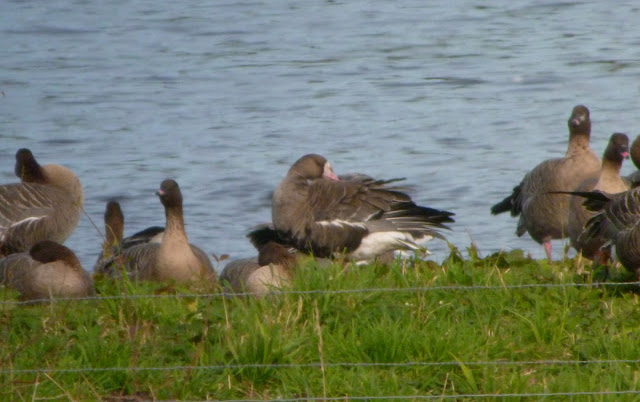Anyway back to ageing. Knowing the age of birds is useful in terms of definitive identification and this can can be applied to conservation science. Knowing a species productivity in any give year helps us to observe and record changes in populations, these changes in turn can help us better understand our environment and the changes to it. As you know I'm involved in counting Pink-footed Geese and I also try to age flocks and work out brood sizes. This data is useful to WWT, RSPB and BTO. Folk sometimes ask how do you age geese? So, here are a few tips;
In early autumn telling adults from youngsters is fairly easy with good views and practice; adults have broad white edges to the feathers on the upper margin of the flank - it looks like a long white stripe across the flank, this is lacking in juveniles until much later in the winter. The flank feathers on adults are broad, with pale squarish tips contrasting with the small, narrow tipped flank feathers on juveniles. If you look at the coverts on adults you'll notice that that they are squarish with broad pale tips, contrast this with the smaller, narrower tipped coverts on juveniles (most of these coverts aren't moulted until the spring). The tertial feathers on juveniles in the ealry winter are shorter and norrower in juveniles. Juveniles often have less distinct neck furrows and duller bare parts than adults. If you watch a flock of geese carefully and take your time you can often pick out family groups based on behaviuor, next time you're at one of the goose feeding grounds have a proper look.
So, below are some pics of adult and juvenile Pink-footed Geese.
Juvenile Pink-footed Goose (foreground) with an adult (rear)
Juvenile Pink-footed Goose (right)
Typical view of feeding Pink-feet, juvenile (foreground) and adult (rear)
Danish 2SB, a fine adult male Pink-footed Goose, with a juvenile in the backgound.






























